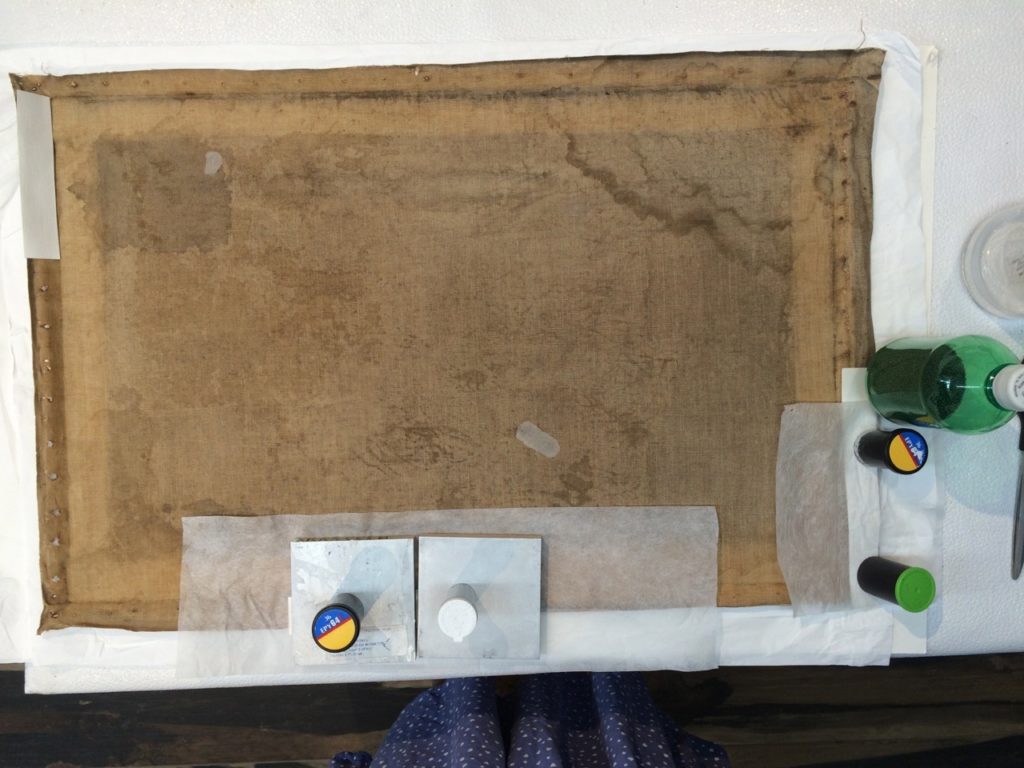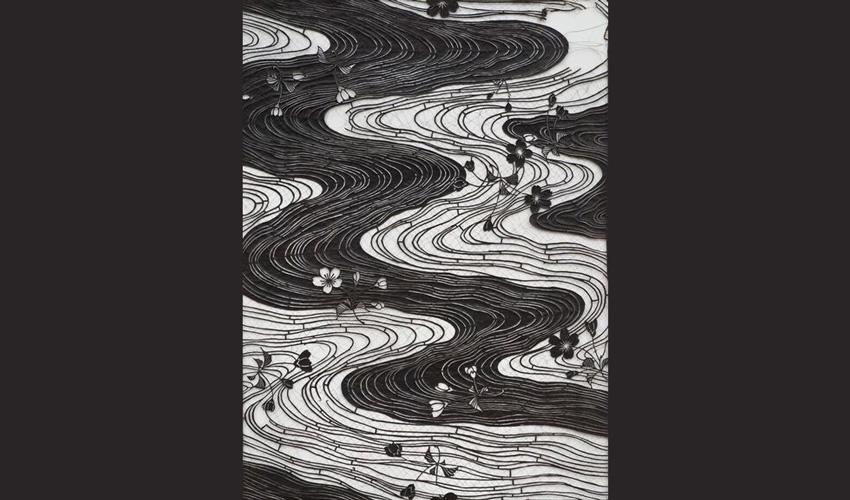When it comes to the finest art projects and professional works of art, linen canvas simply has no rival in cotton. Exceptional artists like Katherine McNenly, with her Naturalistic still lifes and portraits, gravitate to linen for its quality, longevity, and inherent elegance. Incredibly strong and light, prepared linen offers a smooth, flat surface on which to bring your vision to life.

Katherine McNenly, Night Swimmer oil on linen. Image: www.katherinemcnenly.com.
It’s not only that unique quality that drives linen’s higher prices; scarcity plays a large role, as well. The best linen comes from flax grown in Western Europe, where the growing season spans just 100 days from March to July. As they reach maturity, the flax plants will bloom an intense violet, blue or white for a single day. That’s the signal to growers that it’s time to uproot, rather than cut, the plants. This is necessary to preserve the integrity of the fibers, which grow in the flax root as well as the stalk.

A blooming flax field near the Libeco weaving mill in the Flemish countryside. Photo credit: Libeco
Once laid out in the field, the plants are left exposed to the rain and sun for several weeks to age. They’re turned regularly and, once uniformly dried and matured, baled for transport, then sent for scutching and heckling. Only then is it ready for spinning and weaving into yarns and linen textiles like canvas for your fine art projects.
If you’re still on the fence about whether to use linen or cotton, you can learn more about the pros and cons of each canvas in Cotton vs. Linen: Which Canvas is Best & Why?
Many professional artists choose to invest in linen canvas for its strength, durability, and natural weaved finish. Here’s how to protect your investment and achieve the best results in your next fine art project on a linen canvas:
GET TO KNOW YOUR LINEN SUPPLIER
The tedious process of linen production is directly responsible for the cost of the canvas, which means you should be leery of products with prices too good to be true. Some manufacturers use cotton machines to process flax, to save on the labour-intensive process of extracting the plant fibers from the stalks, but this results in a lower quality canvas. Others might mix linen fibers with less expensive fibers to create a lower cost textile that’s ultimately lesser in quality, as well.

Elinore Schnurr, In Our Mind’s Eye II oil on linen.
In order to achieve the longevity, strength and uniform absorption unique to the best quality linen canvas, it’s important that you purchase it from a reputable source, preferably manufactured in Belgium.
The time consuming but fascinating process of producing top quality linen requires a great deal of knowledge and experience. It’s a process illustrated in this video by Libeco, a linen producer from Meulebeke, Belgium with over 150 years experience in the trade.
Libeco – How linen is made from Libeco on Vimeo.
Their experience and the proven quality of their certified Belgian linen is why we carry Libeco linen canvas in 7, 8, and 10.5 oz. weights, with widths ranging from 54.5″ to 86″.
CHOOSE A FRAME TO SUPPORT YOUR LINEN CANVAS
The natural tensile strength of linen canvas demands a strong frame to support it. Choosing a keyable canvas stretcher gives you the ability to adjust the tension of the frame over time, ensuring your canvas stays taut and firm.

A keyable frame allows you to adjust the stretcher over time, keeping your linen canvas tight and smooth.
Depending on the size of your painting and whether you’re using raw linen canvas that you plan to gesso yourself, you may need cross bracing, laminated long stretcher bars, or other design elements that increase the strength and stability of your frame.
We put together this Stretcher Bars Cheat Sheet to help you determine which frame will work best for you. And don’t forget, we’re always available to consult on your heavy duty, oversized or irregularly shaped projects.
TO PRIME OR PURCHASE PRE-PRIMED?
This can be a difficult decision for artists, especially if you like to be involved in and/or control the process of creating your works from start to finish.
Linen is more difficult than cotton to stretch. As art supplies manufacturer Daniel Smith notes, “Stretching raw linen requires more care and delicacy than does cotton and is far more time consuming. If you have never stretched a canvas, raw linen is not a good practice material. It is far too costly and finicky to attempt to stretch linen without experience. If you want experience, stretch cotton, which is available in inexpensive student grades.”

An artist applies rabbit skin glue as sizing on raw Belgian linen canvas.
You also don’t want to break your frame (or warp your canvas) if you’ve underestimated the tightness of the sizing. Acrylic-based gesso has become a more popular sizing alternative to rabbit skin glue, which is only suitable for use under oil paints (acrylic will just flake off RSG). Acrylic on linen also gives you a little more friction, which can increase your brush control for fine detail. If you’re new to rabbit skin glue, you’ll want to experiment and get to know how tight it draws your canvas before trying to size a large piece of linen.
We do all kinds of custom work for artists in need of irregularly shaped, large or extra-deep primed linen canvases. Give us a call at 1-800-561-4944 or contact us by email with your specs and we’ll stretch a primed linen to order for you.
Or, shop our top quality selection of unprimed linen canvas online today!
LOOKING TO ORDER ONLINE? WE HAVE CUSTOM SHAPED CANVASES!
SHOP OUR ONLINE STORE FOR ART SUPPLIES


![Why Beveled Canvas Stretcher Frames Are Best [Case Study]](https://cdn.shopify.com/s/files/1/0136/7159/6090/files/why-beveled-canvas-stretcher-frames-are-best-case-study.jpg)








 If you are an aspiring artist and have gone down to West Palm Beach for a vacation, why not checkout these three art supply stores while down there?
If you are an aspiring artist and have gone down to West Palm Beach for a vacation, why not checkout these three art supply stores while down there?
























 The symbols I (
The symbols I (

 Vancouver’s art scene is bustling with established and emerging artists. Almost any night of the week, you can find an exhibit opening or event. These 10 amazing and unique exhibits showing throughout the city this fall have something for everyone from photography, sculptures, interactive art and of course, paintings. Here’s 10 Vancouver Art venues that are as unique as the art itself featuring university campuses to intimate smaller galleries.
Vancouver’s art scene is bustling with established and emerging artists. Almost any night of the week, you can find an exhibit opening or event. These 10 amazing and unique exhibits showing throughout the city this fall have something for everyone from photography, sculptures, interactive art and of course, paintings. Here’s 10 Vancouver Art venues that are as unique as the art itself featuring university campuses to intimate smaller galleries. Although
Although 







